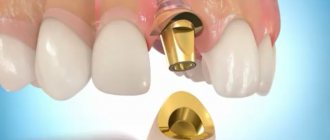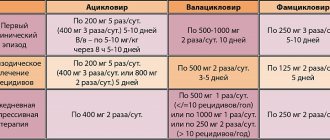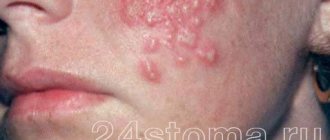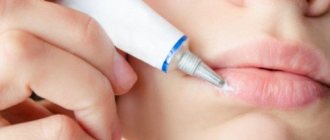Possible applications
These products are recommended by experts for the treatment of herbes, as they have the ability
- prevent the formation of new sites of infection;
- reduce the possibility of spreading infection through internal organs;
- speed up the healing of ulcers;
- reduce pain in the acute phases of the disease;
- stimulate the body's immune system.
The variety of forms of the drug containing acyclovir, which are offered by the pharmaceutical industry, makes it possible to use the drug both for local treatment and in a system with other formulations.
How to take acyclovir?
You must take acyclovir exactly as indicated in the instructions or as individually prescribed by your doctor. Do not use the drug in doses that do not comply with the instructions and do not exceed the permissible duration of use.
To use this medication in children, be sure to consult a doctor and carefully study the official instructions for the drug.
To use buccal acyclovir, do not crush, chew, suck, or swallow the tablet; simply place the flat side of the tablet on the herpes-affected area.
Note!
Giving buccal tablets to children is strictly prohibited, as this can lead to suffocation.
If you take acyclovir in the form of a suspension, be sure to use a special dosing measuring cup to measure the dosage. It is not recommended to use ordinary cutlery (a kitchen spoon) for this purpose.
The calculation of the dose of acyclovir used depends on the weight category (especially important for children). When losing or gaining body weight, the dose may vary.
During treatment with acyclovir, it is important to drink as much fluid (drinking water) as possible to maintain normal kidney function.
When prescribed a course of treatment with this drug, it is necessary to strictly follow it, even if your symptoms improve after the first days of using acyclovir, since interrupting treatment or skipping doses may increase the risk that the virus will become resistant to acyclovir, and there is also a high likelihood of frequent relapses.
The drug should be stored out of the reach of children, away from moisture and heat.
Dosage forms
Products containing the active substance are produced by the following companies:
- in tablets;
- in powders intended for the preparation of solutions used for intravenous drip administration of the drug;
- in a thick cream or ointment consistency.
The use of the product, regardless of the release form, does not impose any age restrictions and is generally recommended based on the indications in each individual case. However, the use of compositions used to prepare solutions for drip administration implies hospital treatment, as it requires compliance with certain precautions.
Drugs produced in the form of creams, ointments and tablets are recommended for outpatient treatment.
Symptoms of acyclovir overdose
You should stop taking acyclovir if you experience these symptoms:
- easy bruising or bleeding, purple or red dotted spots under the skin;
- changes in behavior (motor restlessness and emotional agitation, confusion, hallucinations);
- disorders of the urinary system (anuria (lack of urination), painful or difficult urination), swelling of the lower extremities;
- feeling tired, shortness of breath.
Uncomplicated side effects of acyclovir include:
- skin allergic manifestations (itching, soreness of the skin when touched, rashes);
- nausea, which may be accompanied by vomiting, stomach upset (diarrhea);
- headaches and/or dizziness;
- pain in the mouth when taking acyclovir tablets buccally (by the cheek).
Typically, cases of acyclovir overdose have been recorded extremely rarely, but common manifestations are allergic reactions, which entail a number of symptoms:
- hives, blisters, itching;
- difficulty breathing and swallowing;
- swelling of the face, throat, tongue, lips, eyes, hands, feet, ankles, or legs;
- hoarseness;
- cardiopalmus;
- general weakness;
- pale skin;
- confusion and/or loss of consciousness;
- the appearance of unusual bruises on the body;
- blood in urine and stool;
- numbness, burning or tingling in the upper and lower extremities;
- temporary inability to move parts of the body.
If you experience any of the above symptoms, you should contact your doctor immediately.
Recommendations for use
Indications for the use of formulations containing acyclovir are:
- eye diseases caused by herbes simplex virus;
- herbes of the red border of the lips and skin tissues;
- viral stomatitis of the oral cavity;
- genital herpes;
- hepatic encephalitis.
For successful treatment of the disease, experts recommend:
- 5 percent creams, effective for external use;
- 5 percent ointments;
- ophthalmic 3 percent formulations;
- tablet forms, dosed at 200 and 400 mg;
- powders, for solutions, doses from 200 mg to 1 g.
Side effect
The frequency categories of adverse reactions listed below are estimates. For most adverse reactions, the necessary data to determine the frequency of occurrence are not available. In addition, the incidence of adverse reactions may vary depending on the indication.
The adverse reactions presented below are listed according to their frequency of occurrence, defined as follows: very common (>1/10), common (>1/100 and <1/10), uncommon (>1/1000 and <1/100 ), rare (>1/10,000 and <1/1000), very rare (<1/10,000).
Frequency of occurrence of adverse reactions
Blood and lymphatic system disorders
Very rare: anemia, leukopenia, thrombocytopenia.
Immune system disorders
Rarely: anaphylaxis.
Nervous system and mental status disorders
Common: headache, dizziness.
Very rare: agitation, confusion, tremor, ataxia, dysarthria, hallucinations, psychotic symptoms, convulsions, drowsiness, encephalopathy, coma.
Typically, these side effects were observed in patients with renal failure or in the presence of other precipitating factors and were mainly reversible (see section "Special instructions"
).
Respiratory, thoracic and mediastinal disorders
Rarely: shortness of breath.
Gastrointestinal disorders
Common: nausea, vomiting, diarrhea, abdominal pain.
Disorders of the liver and biliary tract
Rare: reversible increase in the concentration of bilirubin and liver enzymes in the blood.
Very rare: hepatitis, jaundice.
Skin and subcutaneous tissue disorders
Common: itching, rash, including photosensitivity.
Uncommon: urticaria, rapid diffuse hair loss.
Since rapid diffuse hair loss is observed in various diseases and during therapy with many drugs, its connection with the use of acyclovir has not been established.
Rarely: angioedema.
Very rare: toxic epidermal necrolysis, exudative erythema multiforme.
Renal and urinary tract disorders
Rarely: increased concentrations of urea and creatinine in the blood serum.
Very rare: acute renal failure, renal colic.
Renal colic may be associated with renal failure and crystalluria.
General and administration site disorders
Common: fatigue, fever.
Acyclovir - instructions for use
When treating stomatitis caused by the herbes virus, it is customary to use acyclovir tablets, since creams and ointments are not able to have the desired effect due to the impossibility of fixing fat-based medications in the oral cavity. Therefore, such compositions are recommended for use when infection spreads in the skin tissues.
The course of the disease in severe form often requires the administration of drug solutions intravenously.
Acyclovir tablets
The course of taking tablets is from five to ten days, during which the drug is taken 4-5 times a day. For both adult patients and children starting from two years of age, the dosage of the drug is 200 mg at a time, and for children under two years of age the dose is halved, which is 100 mg.
Diseases that occur in severe forms often require an increase in dosage and therefore the drug can be prescribed in an amount of 400 mg per dose.
It should be taken into account that tablets should be taken during the daytime, which allows the drug not to settle in the kidneys and not cause side effects in the genitourinary system of the body. In addition, it is recommended to increase the volume of fluid consumed by the patient, which helps reduce the concentration of acyclovir in the urine and prevent the development of kidney disorders.
Treatment of the so-called “chickenpox” with drugs containing acyclovir is not recommended for children, since their age allows them to tolerate this disease in a milder form than adults.
Powder forms of acyclovir
Compositions for administering the drug through a dropper are prepared on the basis of physiological solution, for which bottles containing a certain amount of the drug are filled with liquid, according to the instructions, shaken thoroughly until the suspended particles are completely dissolved, and the finished solution is poured into containers for drip infusions.
Before the first use of the composition, it is necessary to test the tolerability of the drug, which allows you to avoid allergic reactions of the body when using it. The test involves applying the drug to a shallow scratch made with a needle on the inside of the forearm and observing for several minutes. If an area of inflammation forms around the damaged surface, the use of acyclovir should be avoided.
Drip administration of the drug is justified by the fact that the content of the drug in the patient’s blood should increase gradually, since otherwise this procedure can provoke complications. Therefore, one-time procedures are carried out within an hour, and sometimes longer.
Acyclovir ointment - instructions for use
Acyclovir ointment, the use of which is recommended for the local treatment of ailments caused by the herbes virus, is offered in tubes of 2, 5 or 10 g, the content of the active substance in these compositions is exactly 5%, which makes it possible to use the drug in the initial phase of the disease. Thus, products in the form of ointments and creams are recommended to be used at the first signs of the disease:
· when itching occurs;
· minor pain.
The procedures should be continued for 5-10 days, applying the composition to the skin, without rubbing the product, into the damaged area.
Acyclovir helps reduce the intensity of skin lesions, promoting rapid healing and crust formation. However, the crusts that form when using the drug should not be removed independently, since such an initiative significantly reduces the effectiveness of treatment and provokes infection of others with the herbes virus.
In addition, the use of the drug for medicinal purposes does not prevent the spread of the disease through sexual contact.
Eye ointment containing acyclovir
Such products are commercially produced in small tubes containing up to five grams of the drug, with an acyclovir concentration of 3%.
The use of the composition involves placing the product behind the lower eyelid, a thin strip up to one centimeter long, which helps the composition spread across the cornea and absorption into the surrounding tissues.
It is recommended to use the drug up to 5 times a day, for 5-10 days, however, if signs of intolerance occur, you must see a specialist and change the medicine.
Cost of drugs
Drugs in various forms are produced by both domestic and foreign pharmaceutical companies, therefore the choice of products that include acyclovir is quite diverse. In addition, the cost of these antiviral agents is affordable.
Thus, acyclovir in tablets, the price of which from domestic manufacturers does not exceed 250 rubles, allows people of any income to purchase and use an effective remedy.
Drugs produced in the form of ointments and creams are also not very expensive, which makes it possible to successfully cope with the disease in its initial stages without resorting to hospital treatment.
Powder forms of acyclovir, used for drip administration by professional medical workers, are produced mainly abroad, which affects the cost, but their use helps to cure severe viral infections.
What is acyclovir?
Acyclovir is a selective, antiviral drug, a nucleoside analogue, related to cytarabine, idoxuridine, trifluridine and vidarabine, active against 4 types of herpes virus (herpes simplex types 1 and 2, chickenpox (type 3), cytomegalovirus (type 4)). It slows down the growth and spread of the herpes virus in the body by affecting their viral cells at the DNA level. This drug does not completely cure herpes, but it reduces the symptoms of the infection and its acute course.
Acyclovir is used both for therapeutic treatment and for the prevention of relapses. It effectively eliminates skin rashes and foci of inflammation around it, prevents the spread of the viral pathogen (contamination), and reduces the complications of herpes.
The effect of acyclovir therapy is greatest when treatment is started early, especially for non-primary infections, which usually have a shorter course than the primary episode. Long-term prophylactic oral acyclovir in patients with frequent episodes of genital herpes simplex completely suppresses relapses in most patients; As with other acyclovir-responsive infections, the viral latency period is not eradicated and the pre-treatment relapse rate returns after treatment is stopped.
Caution should be exercised when using acyclovir prophylactically in the general population due to the theoretical risk of the emergence of viral strains that are resistant to acyclovir and other agents whose mechanism of action is dependent on viral thymidine kinase (viral protein).
Intravenous acyclovir is the drug of choice for biopsy-proven herpetic encephalitis (damage to the nervous system by herpes) in adults, and has also been successfully used in the treatment of disseminated herpes simplex in pregnant women and herpes in newborns. Intravenous and oral acyclovir protects against the spread and progression of varicella zoster virus infection, but does not protect against postherpetic neuralgia (a complication of herpes zoster, manifested by the appearance of serous rashes in the area of innervation of individual branches of the trigeminal nerve).
In immunocompromised patients, intravenous, oral, and topical acyclovir reduces the clinical course of herpes simplex infections, while prophylaxis with oral or intravenous dosage forms suppresses reactivation (recurrence) of the infection while taking the drug.
Ophthalmic use of 3% acyclovir ointment quickly cures herpetic corneal ulcers and superficial herpetic keratitis. Thus, despite its failure to eradicate latent virus, acyclovir, administered therapeutically or prophylactically, is now standard antiviral therapy for some manifestations of herpes simplex virus infection and does represent a major advance in this regard.








